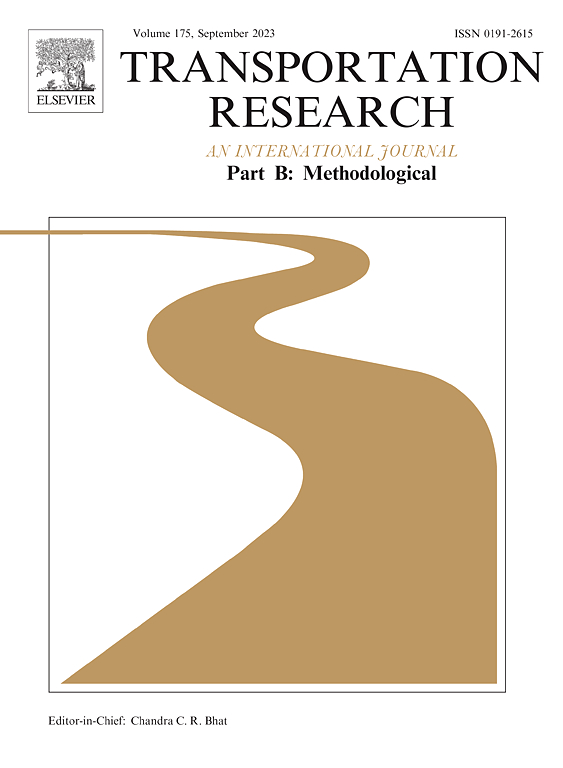面向大规模快速交通中断管理的联合公交调度与桥接调度
IF 6.3
1区 工程技术
Q1 ECONOMICS
引用次数: 0
摘要
捷运(MRT)系统在城市交通服务中发挥着关键作用,但经常受到各种干扰。巴士过桥服务是一种广泛应用的替代交通服务,以应对地铁中断,需要大量的巴士运送滞留的地铁乘客。在实际应用中,这些公交车可能从附近的公交线路或公交车站调度,这不可避免地会影响到公交车乘客。然而,文献很少关注公共汽车的来源,不切实际地假设公共汽车是立即可用的。为了弥补这一差距,本文提出了一种将公交调度与公交过桥调度相结合的联合优化问题,同时考虑到公交调度对公交乘客的影响与地铁乘客的疏散之间的平衡。建立了一种混合整数线性规划模型,以最小化公交车和桥接系统中受影响的车上乘客和累计等候乘客所造成的总损失。设计了一种定制的分解方法,以有效地找到高质量的解。采用分解方法,将模型分解为三个子问题,并根据子问题的特点,开发出三种定制化、高效的求解方法。通过新加坡的案例分析,证明了该方法的有效性。计算结果表明,该方法能有效地指导公交调度疏散滞留乘客,同时最大限度地减少对公交乘客的影响。最后,分析了行车时间、公交车频次、乘客需求和处罚系数的影响。本文章由计算机程序翻译,如有差异,请以英文原文为准。
Joint bus dispatching and bus bridging timetabling for mass rapid transit disruption management
The mass rapid transit (MRT) systems play a pivotal role in urban mobility services but are frequently susceptible to various disruptions. Bus bridging service is a widely-applied substitute transit service in response to MRT disruptions, which requires a significant number of buses to transport stranded MRT passengers. In practical applications, these buses may be dispatched from the nearby bus lines or bus depots, which inevitably affect bus passengers. However, the literature has paid very little attention to the sources of buses and impractically assumed buses are immediately available. To bridge this gap, this paper proposes a joint optimization problem integrating bus dispatching and bus bridging timetabling, considering the balance between the impact of bus dispatching on bus passengers and evacuation of MRT passengers. A mixed integer linear programming model is developed to minimize total penalties caused by affected onboard passengers and cumulative waiting passengers in both bus and bus bridging systems. A tailored decomposition method is devised to find high-quality solutions efficiently. By applying the decomposition method, the model is split into three sub-problems, which are solved by three tailored and efficient methods developed based on their unique features. The efficiency of the proposed method is demonstrated using Singapore case studies. The computational results show that our method can guide bus dispatching efficiently to evacuate stranded passengers while minimizing the impact on bus passengers. Finally, the impacts of duration, bus frequency, passenger demand, and penalty coefficients are analyzed.
求助全文
通过发布文献求助,成功后即可免费获取论文全文。
去求助
来源期刊
CiteScore
12.40
自引率
8.80%
发文量
143
审稿时长
14.1 weeks
期刊介绍:
Transportation Research: Part B publishes papers on all methodological aspects of the subject, particularly those that require mathematical analysis. The general theme of the journal is the development and solution of problems that are adequately motivated to deal with important aspects of the design and/or analysis of transportation systems. Areas covered include: traffic flow; design and analysis of transportation networks; control and scheduling; optimization; queuing theory; logistics; supply chains; development and application of statistical, econometric and mathematical models to address transportation problems; cost models; pricing and/or investment; traveler or shipper behavior; cost-benefit methodologies.

 求助内容:
求助内容: 应助结果提醒方式:
应助结果提醒方式:


